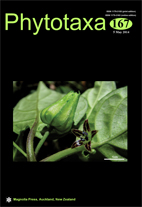Abstract
Reaumuria is an arid adapted genus with a distribution center in Central Asia; its evolution and dispersal is investigated in this paper. Eighteen species of Reaumuria and nine species of two other genera in the Tamaricaceae, Tamarix and Myricaria, were sampled, and four markers ITS, rps16, psbB-psbH, and trnL-trnF were sequenced. The reconstructed phylogenetic tree is fundamentally consistent with previous morphological classification, except that R. soongorica, sometimes considered to be a separate genus or subgenus, is completely nested within Reaumuria. The ancestral area of the genus is suggested to be western Central Asia, and distributions in the Iran-Mediterranean area and the Tianshan and Pamir-Alai mountains are inferred as dispersals. Westward dispersals to the Iran-Mediterranean were ancient Oligocene to Miocene , whereas dispersals eastward were recent. The spatiotemporal evolution of Reaumuria is used as a link to abiotic paleoclimatic and geological events, in particular, increased aridity beginning at the Eocene-Oligocene Transition (EOT), and as a result of uplift of the Himalayas and Qinghai-Tibet Plateau (QTP). The diversification of the two sections (22.51–19.78 Ma) suggests a response to increasing aridification in response to QTP uplift and expansion.

